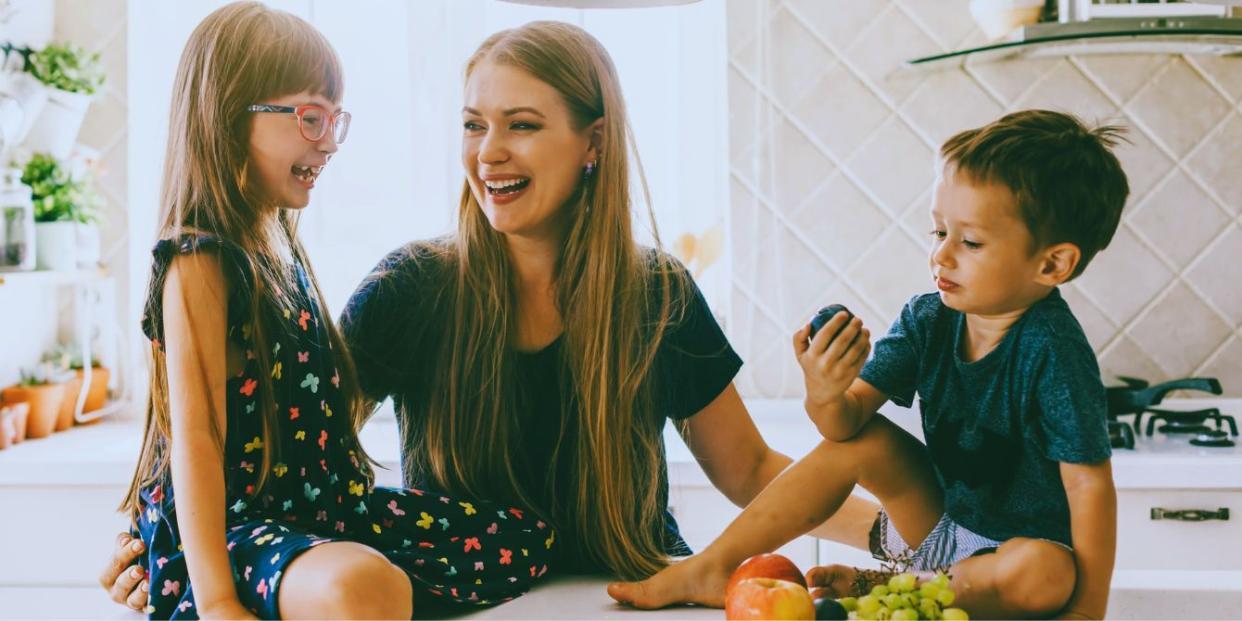Why I fully embrace ‘toddler dinner’—even as a dietitian

Cooking for a family of five while working a full-time job is no easy task. It’s tough to cater to various food preferences, tackle the never-ending grocery list, and then squeeze in time to actually cook dinner. My go-to approach involves relying on a rotation of quick and easy dinners I know my kids will enjoy—pasta and meat sauce, quesadillas, slow cooker chicken and breakfast-for-dinner. But when exhaustion hits or when the clock is ticking on a last-minute deadline, the thought of cooking becomes downright overwhelming. In those instances, all I want to do is throw up my hands and order takeout, but instead, I happily turn to “toddler dinner.”
What is ‘toddler dinner’?
Toddler dinner is my mom-centric take on the recent viral “girl dinner” trend that you’ve probably seen all over social media. Girl dinners are effortless, no-cook meals crafted from a hodgepodge of random foods and snacks found in your fridge or pantry. Have a handful of leftover olives? Throw them on your plate. A couple slices of bread on the brink of staleness? Toast them up and add that overripe avocado that’s on the verge of browning. Essentially, girl dinner is a fresh rebrand of your typical snack plate.
So toddler dinner has become my go-to solution for hectic days when I could really use a few shortcuts to make it through dinner. As a mom who’s also a pediatric dietitian, I’m all for keeping it simple, so I’m totally on board with the idea of charcuterie-style meals—no cooking, zero prep and minimal cleanup.
But when it comes to nutrition, you better believe I pack it in. Even though they may not resemble your traditional dinner spread, a toddler dinner consisting of a few slices of cheese, the last pickle in the jar, and crackers and hummus is actually the perfect combo of protein, veggies, fats and carbs.
Reducing the mental load of dinnertime
Incorporating toddler dinners into your weekly routine makes dinnertime easier for parents. Sure, we all want our kids to have wholesome, healthy meals but that doesn’t always have to translate into a hot, elaborate meal nor does it require spending hours in the kitchen between prepping, cooking and cleanup. Sometimes, we just need to cut ourselves some slack, especially when we’re stressed, exhausted or just need a break. Even if we’re good at hiding our emotions, kids are perceptive and can sense when we’re feeling tense or overwhelmed. I don’t know about you, but I’m not on my best behavior when I’m feeling stressed, and kids have a way of mirroring our emotions. Dinner can quickly turn gloomy with untouched plates and pouty frowns.
Critics (and there are always critics) of ‘girl dinner’ claim that a mix-and-match approach to meals promotes disordered eating and diet culture, suggesting that ‘girl dinner’ is all about small portions and few calories. In the original video, Olivia Maher’s ‘girl dinner’ was anything but. Her plate featured a balanced array of essential food groups (minus the wine), and in a video format, we can’t accurately gauge portion sizes. So instead of fixating on what it’s not, I choose to celebrate the ingenious concept of ‘girl dinner’ and explore how creative I can really get in my own kitchen with what I have on hand.
How to make your own ‘toddler dinner’
Toddler dinner can be as simple as including proteins like Greek yogurt, cottage cheese, assorted nuts (for older kids), turkey slices (nitrate-free!) canned beans and lentils, or easy reheat options like fish sticks or chicken nuggets. Pair them with dips, which are an easy way to get in healthy fats like ranch dressing, hummus, tahini, or guacamole. Effortless fruits or veggies can include baby carrots, prewashed and sliced celery, baby bell peppers and berries. For starches and grains think crackers, sliced bread, rice cakes or canned peas or corn. The goal is minimal effort and prep, which means less clean up and mess.
If you’re still on the fence and need more reasons to add toddler dinner to your weekly meal rotation, consider this: not only does it alleviate the physical and mental burden for parents, but it’s also budget-friendly, helps reduce food waste (hello, leftovers!), and is a break away from the usual dinner routine, which is super fun for kids. So why not give it a try? You’ll thank me later.
A version of this story was originally published on Feb. 9. 2024. It has been updated.

 Yahoo Lifestyle
Yahoo Lifestyle 
